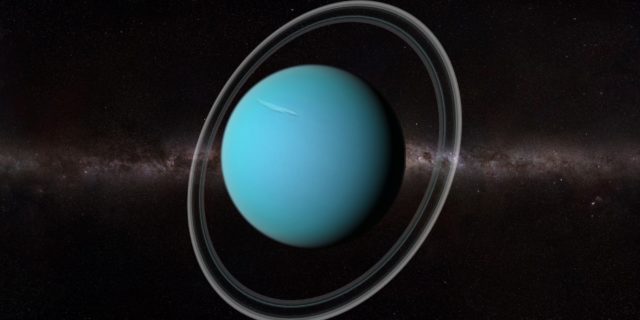What was the first planet to be discovered using the telescope in 1781 uranus

Introduction
The discovery of Uranus, the seventh planet from the Sun, marked a significant milestone in astronomy. With its unique blue-green color and distant location, Uranus took the world by surprise when it was first observed through a telescope in 1781. This fascinating planet continues to intrigue scientists and stargazers alike, offering valuable insights into our solar system’s history and formation.

The Telescope Revolution
The late 18th century witnessed a remarkable advancement in scientific instruments, with the development of powerful telescopes. These groundbreaking devices opened up new possibilities for studying celestial bodies, leading to discoveries that forever changed our understanding of the cosmos.
The Discovery of Uranus
On March 13, 1781, Sir William Herschel, an astronomer from England, made an astounding revelation while observing the night sky. His meticulous observations using a reflector telescope led to the identification of an unknown object that appeared to be a comet. However, further observations revealed that this celestial body was, in fact, a new planet.
Herschel initially named the new planet “Georgium Sidus” (George’s Star) in honor of King George III. However, it was later renamed Uranus, after the Greek deity of the sky, in accordance with the tradition of naming planets after ancient gods.
Exploring Uranus
Uranus is a gas giant, similar to Jupiter and Saturn, but it boasts several unique features. Its atmosphere consists primarily of hydrogen and helium, with trace amounts of methane that gives Uranus its distinctive blue-green hue. The planet’s composition includes an icy core surrounded by a thick atmosphere and a system of rings.

Unusual Tilt and Moons
One of Uranus’s most intriguing characteristics is its extreme tilt. Unlike most planets, which have an axis roughly perpendicular to their orbit, Uranus tilts on its side, causing its poles to almost face the Sun directly during certain parts of its orbit. This peculiar tilt results in extreme seasonal variations on Uranus.
Uranus also possesses a fascinating system of moons. The planet has 27 known moons, each named after characters from the works of William Shakespeare and Alexander Pope. The five largest moons are Miranda, Ariel, Umbriel, Titania, and Oberon, with Miranda exhibiting particularly unique and varied terrains.
The Legacy of Uranus’s Discovery
The discovery of Uranus expanded humanity’s understanding of the solar system. It served as an essential stepping stone in unraveling the mysteries of the universe and paved the way for further advancements in astronomical research.
Today, with increasingly sophisticated telescopes and space probes, scientists continue to study Uranus to gain insights into its atmosphere, magnetic field, and overall composition. Every new discovery brings us closer to comprehending the origin and evolution of our own planet and the vast universe beyond.
Conclusion
Tags
Share
Related Posts
Quick Links
Legal Stuff

